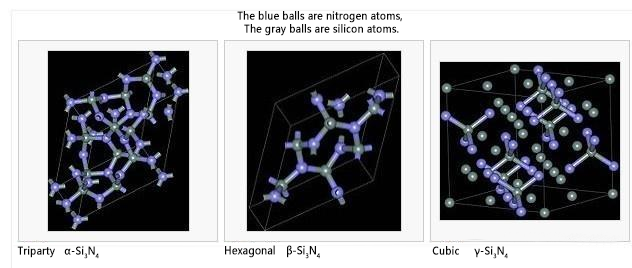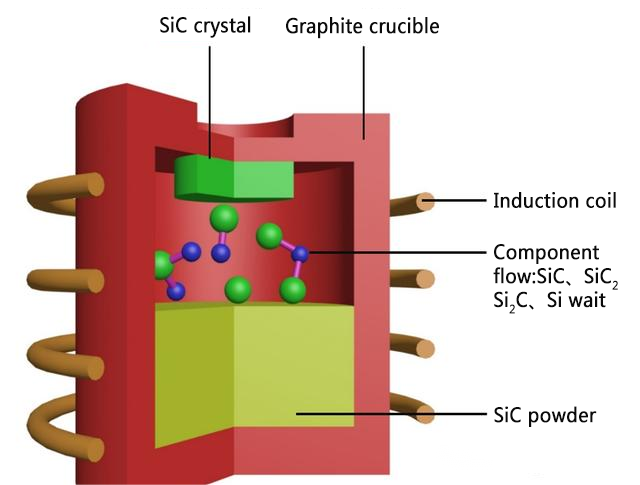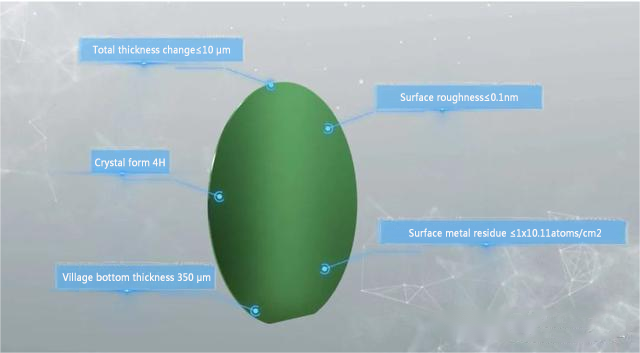Since its discovery, silicon carbide has attracted widespread attention. Silicon carbide is composed of half Si atoms and half C atoms, which are connected by covalent bonds through electron pairs sharing sp3 hybrid orbitals. In the basic structural unit of its single crystal, four Si atoms are arranged in a regular tetrahedral structure, and the C atom is located at the center of the regular tetrahedron. Conversely, the Si atom can also be regarded as the center of the tetrahedron, thereby forming SiC4 or CSi4. Tetrahedral structure. The covalent bond in SiC is highly ionic, and the silicon-carbon bond energy is very high, about 4.47eV. Due to the low stacking fault energy, silicon carbide crystals easily form various polytypes during the growth process. There are more than 200 known polytypes, which can be divided into three major categories: cubic, hexagonal and trigonal.
At present, the main growth methods of SiC crystals include Physical Vapor Transport Method (PVT method), High Temperature Chemical Vapor Deposition (HTCVD method), Liquid Phase Method, etc. Among them, the PVT method is more mature and more suitable for industrial mass production.
The so-called PVT method refers to placing SiC seed crystals on the top of the crucible, and placing SiC powder as raw material at the bottom of the crucible. In a closed environment of high temperature and low pressure, the SiC powder sublimates and moves upward under the action of temperature gradient and concentration difference. A method of transporting it to the vicinity of the seed crystal and then recrystallizing it after reaching a supersaturated state. This method can achieve controllable growth of SiC crystal size and specific crystal forms.
However, using the PVT method to grow SiC crystals requires always maintaining appropriate growth conditions during the long-term growth process, otherwise it will lead to lattice disorder, thus affecting the quality of the crystal. However, the growth of SiC crystals is completed in a closed space. There are few effective monitoring methods and many variables, so process control is difficult.
In the process of growing SiC crystals by the PVT method, the step flow growth mode (Step Flow Growth) is considered to be the main mechanism for the stable growth of a single crystal form.
The vaporized Si atoms and C atoms will preferentially bond with crystal surface atoms at the kink point, where they will nucleate and grow, causing each step to flow forward in parallel. When the step width on the crystal surface far exceeds the diffusion free path of adatoms, a large number of adatoms may agglomerate, and the two-dimensional island-like growth mode formed will destroy the step flow growth mode, resulting in the loss of 4H crystal structure information, resulting in Multiple defects. Therefore, the adjustment of process parameters must achieve the control of the surface step structure, thereby suppressing the generation of polymorphic defects, achieving the purpose of obtaining a single crystal form, and ultimately preparing high-quality crystals.
As the earliest developed SiC crystal growth method, the physical vapor transport method is currently the most mainstream growth method for growing SiC crystals. Compared with other methods, this method has lower requirements for growth equipment, a simple growth process, strong controllability, relatively thorough development research, and has already achieved industrial application. The advantage of the HTCVD method is that it can grow conductive (n, p) and high-purity semi-insulating wafers, and can control the doping concentration so that the carrier concentration in the wafer is adjustable between 3×1013~5×1019/cm3. The disadvantages are high technical threshold and low market share. As the liquid-phase SiC crystal growth technology continues to mature, it will show great potential in advancing the entire SiC industry in the future and is likely to be a new breakthrough point in SiC crystal growth.
Post time: Apr-16-2024




